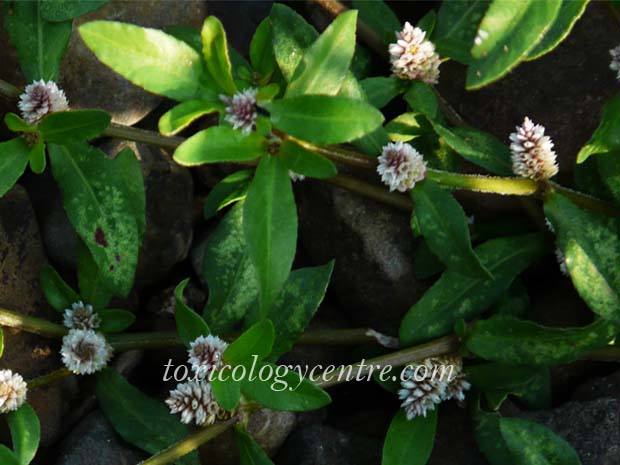
Alternanthera sessilis
Genus: Alternanthera
Botanical name: Alternanthera sessilis
PLANT NAME IN DIFFERENT LANGUAGES
Sanskrit: Matsyaksi, Matsyagandhaa, Matsyaadini, Minaakshi, Bahli, Gandali, Gartkalambukaa, Vaahlikaa, Matsyaakshika
Hindi: Gudrisag
English: Sessile Joyweed, Dwarf Copperleaf, Joyweed
Malayalam: Meengani, Ponnangani, Ponnankanni keera

MEDICINAL PROPERTIES
Sessile Joyweed is a perennial herb with prostrate stems, rarely ascending, often rooting at the nodes. Leaves obovate to broadly elliptic, occasionally linear-lanceolate, 1-15 cm long, 0.3-3 cm wide, glabrous to sparsely villous, petioles 1-5 mm long. Flowers in sessile spikes, bract and bracteoles shiny white, 0.7-1.5 mm long, glabrous; sepals equal, 2.5-3 mm long, outer ones 1-nerved or indistinctly 3-nerved toward base; stamens 5, 2 sterile. In the wild it flowers from December till March.
Whole plant of Sessile Joyweed is used for spleen diseases, eye trouble, liver problems, wound healing, diarrhea and fever. The leaves are used as a vegetable. Young shoots and leaves are eaten as a vegetable in Southeast Asia. Occasionally it is cultivated for food or for use in herbal medicines.

